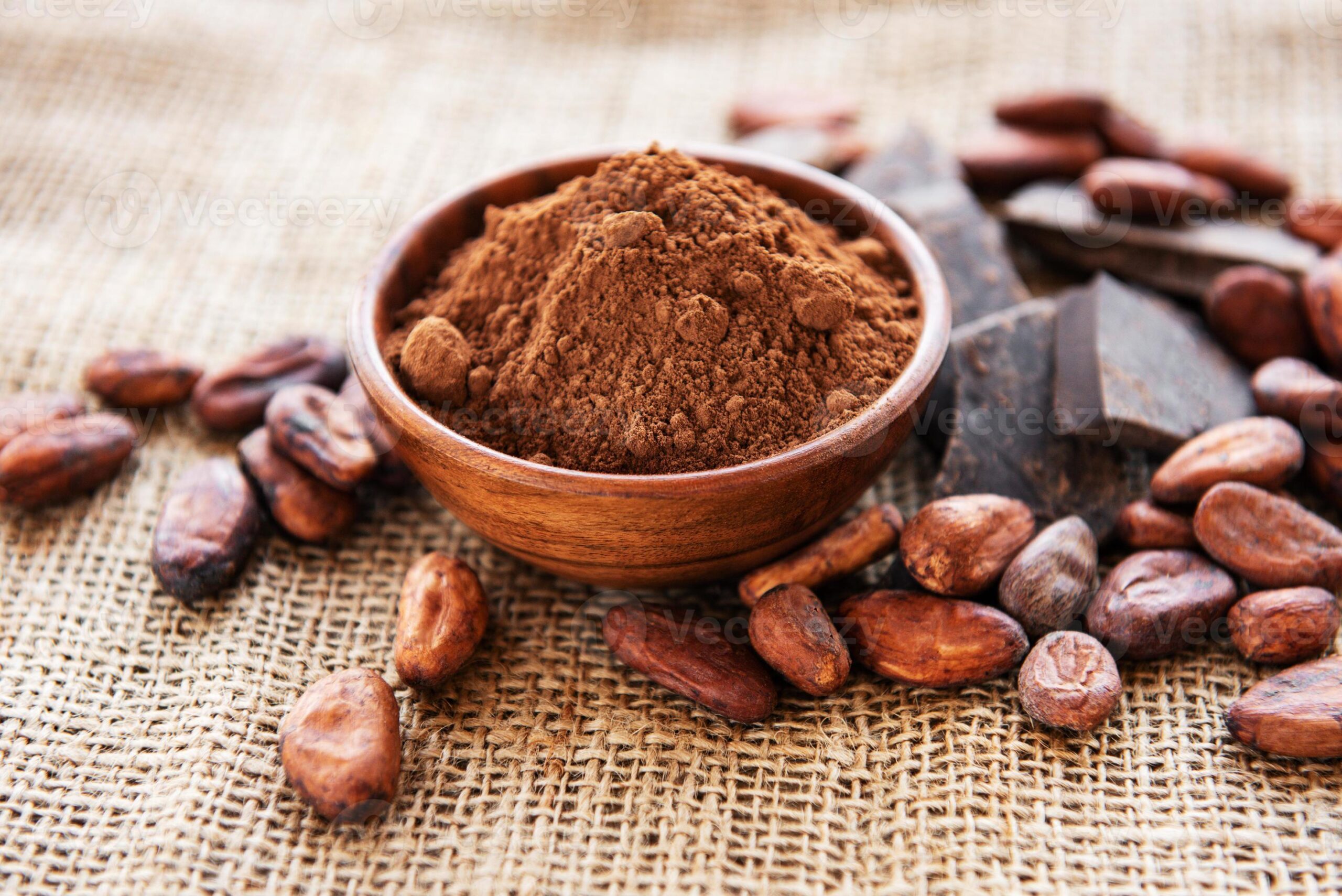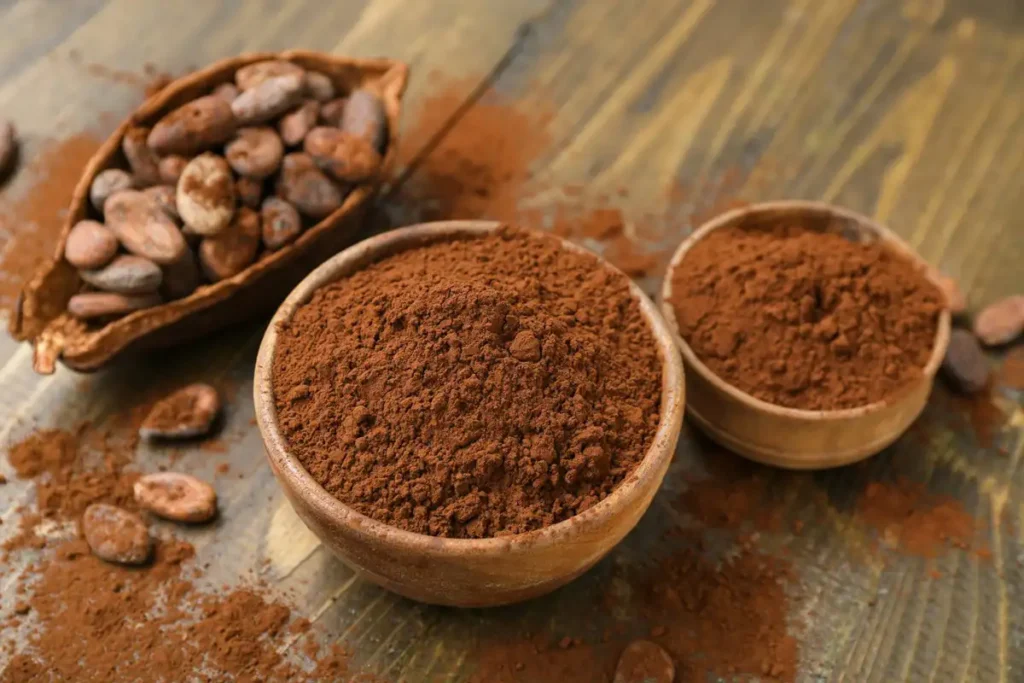In the world of industrial food production, few ingredients carry as much weight—literally and figuratively—as cocoa powder. Whether you’re running a confectionery plant, a bakery line, or a large-scale beverage production facility, the type of cocoa you choose can dramatically influence your product’s color, flavor, texture, and even cost-efficiency.
Among the options available, two forms dominate industrial manufacturing: natural cocoa powder and alkalized cocoa powder (also known as Dutch-processed cocoa). The debate between these two isn’t just a matter of flavor—it’s a matter of chemistry, functionality, and product consistency.
In this in-depth guide, we’ll unpack everything a factory manager or procurement officer needs to know about these two forms of cocoa powder. From their origins and processing methods to their industrial applications and sensory differences, we’ll analyze which type works best for your specific production goals.
And throughout, we’ll draw from the expertise of MT Royal, a trusted industrial supplier providing a wide portfolio of global brands—including Latamarko, a premium Spanish-origin option renowned for its quality and reliability in food manufacturing.
Understanding the Basics: What Makes Cocoa Powder “Natural” or “Alkalized”?
At its core, cocoa powder is derived from the same raw material—the cocoa bean. However, the processing path determines its category:
- Natural Cocoa Powder is made by pressing roasted cocoa beans to remove cocoa butter, leaving behind dry solids that are ground into a fine, reddish-brown powder. No chemical modification occurs.
- Alkalized Cocoa Powder undergoes an additional step—alkalization or “Dutch processing,” where the cocoa solids are treated with an alkaline solution (usually potassium carbonate). This changes its pH, color, and flavor profile.
The result? Two products that may look similar on paper but perform very differently in production environments.
Key Differences Between Alkalized and Natural Cocoa
| Characteristic | Natural Cocoa Powder | Alkalized Cocoa Powder |
|---|---|---|
| pH Level | 5.2–5.8 (acidic) | 6.8–8.0 (neutral to slightly alkaline) |
| Color | Light to medium brown | Dark brown to nearly black |
| Flavor Profile | Sharp, fruity, acidic | Mellow, smooth, deep chocolate flavor |
| Solubility | Lower | Higher (better for liquids) |
| Reaction with Baking Soda | Yes (acid-base reaction) | No (requires baking powder) |
| Industrial Use Cases | Natural-flavored bakery goods, light beverages | Dark chocolate bakery items, chocolate milk, coatings, fillings |
Each powder offers unique functional and sensory qualities that make it more suitable for particular manufacturing goals.
How Alkalization Changes Cocoa
The alkalization process, first developed in the 19th century in the Netherlands, was originally intended to reduce cocoa’s natural acidity and create a smoother flavor. Today, the process also delivers better color control, improved dispersion, and enhanced flavor uniformity—qualities essential for large-scale food production.
During processing, cocoa nibs or liquor are treated with an alkaline solution. This causes chemical reactions that alter pigment molecules (anthocyanins), producing the darker color that’s now associated with “rich chocolate.”
Industrial manufacturers appreciate this process because it leads to greater consistency across batches. When producing thousands of kilograms of cocoa-based product per day, even minor variations in acidity or flavor can affect product uniformity.
Flavor & Appearance in Industrial Applications
If you’ve ever compared two chocolate cakes side by side—one made with natural cocoa and the other with Dutch-processed—you’ll notice the difference instantly.
- Natural cocoa creates a lighter-colored, more reddish product with a hint of tanginess.
- Alkalized cocoa results in darker, smoother-flavored goods that consumers often associate with premium chocolate taste.
In beverage manufacturing (like chocolate milk or cocoa-based protein drinks), alkalized cocoa’s better dispersibility makes it easier to mix into liquids without clumping—a critical efficiency advantage on high-speed production lines.
Industrial Benefits of Alkalized Cocoa
From an industrial standpoint, alkalized cocoa powder offers several operational benefits that go beyond taste:
- Improved Color Control
Manufacturers can select from light, medium, or dark alkalized powders depending on the desired aesthetic. This flexibility is especially valuable in branded consumer goods where color consistency defines visual identity. - Enhanced Solubility
Alkalized cocoa disperses evenly in liquids and fats, reducing the need for additional emulsifiers. This improves process efficiency and cuts down on additive costs. - Better Flavor Integration
The mild flavor profile harmonizes well with dairy, oils, and sweeteners—making it ideal for chocolate spreads, coatings, and fillings. - Higher Stability in Formulations
The neutral pH helps stabilize reactions with leavening agents and other ingredients, reducing formulation risk during scaling.
When Natural Cocoa Shines in Manufacturing
Despite its acidity, natural cocoa powder has its strengths. For manufacturers prioritizing clean-label formulations, it’s often the preferred choice since it’s minimally processed.
Industrial advantages of natural cocoa:
- Authentic cocoa flavor: The raw, bright notes appeal to consumers seeking natural taste experiences.
- Better reactivity: The acidic profile makes it ideal for recipes requiring a natural rise (e.g., biscuits, muffins).
- Regulatory simplicity: Some clean-label brands prefer avoiding alkalized ingredients for labeling transparency.
In practical terms:
If your production goal is an organic or natural-certified product line, natural cocoa aligns better with clean-label trends sweeping through global food markets.
Common Procurement Misconceptions
Even experienced procurement officers sometimes fall into a few traps when sourcing cocoa powder:
- Assuming all dark cocoa is high-quality:
Dark color doesn’t always equal superior quality. It often just reflects heavier alkalization. True quality lies in flavor stability, fat content, and sourcing standards. - Choosing based solely on price:
In industrial applications, cheaper cocoa can increase waste or reduce yield due to inconsistencies. A mid-tier alkalized cocoa often produces better long-term ROI than a low-cost substitute. - Overlooking brand-specific differences:
Two suppliers may both sell “alkalized cocoa,” but the texture, moisture content, and dispersion rate can vary drastically based on processing technology.
At MT Royal, we’ve seen manufacturers achieve significant yield improvements simply by switching to a more consistent grade of cocoa powder—without increasing cost per kilogram.
Industrial Use Cases: Matching Cocoa Type to Product
Choosing between natural and alkalized cocoa isn’t about personal preference—it’s about matching performance with process.
| Application | Recommended Cocoa Type | Why |
|---|---|---|
| Chocolate beverages | Alkalized | Better solubility, smoother mouthfeel |
| Baked goods (cakes, cookies) | Both | Natural for light flavor, alkalized for color depth |
| Ice cream & dairy | Alkalized | Even dispersion in fat-based systems |
| Nutritional bars | Natural | Cleaner label appeal |
| Chocolate coatings & fillings | Alkalized | Consistent color and flavor under heat |
| Cereals & instant powders | Alkalized | Easy rehydration and visual richness |
In large-scale production, the wrong cocoa choice can mean recalibrating entire lines. For example, switching from natural to alkalized cocoa without adjusting leavening systems can produce overly dense bakery items.
A Word on Brand Consistency and Quality Control
Factories running 24-hour production cycles understand that batch-to-batch consistency is as valuable as the ingredient itself. Fluctuations in color or moisture can force expensive recalibrations.
That’s why many procurement managers favor reliable suppliers with controlled sourcing and standardized testing protocols.
At MT Royal, we supply manufacturers with cocoa powders from multiple reputable brands—ensuring both flexibility and reliability. Whether you need natural or alkalized cocoa, our goal is to provide consistent quality tailored to your specific formulation requirements.
The Latamarko Advantage: Premium European Craftsmanship
When discussing high-quality cocoa, Spanish-origin brands like Latamarko often come up for a reason.
Spanish engineering in food processing has long emphasized precision, flavor balance, and consistency, and Latamarko exemplifies these values. For manufacturers aiming for the highest-end confectionery or beverage lines, Latamarko’s refined cocoa powders deliver uniform color, stable fat distribution, and remarkable solubility.
While MT Royal provides a broad spectrum of industrial cocoa options, Latamarko stands out when your product needs that premium European touch—without compromising efficiency or yield.
Pro Tips for Factory Managers and Procurement Teams
- Test in small batches first. Before scaling up, trial both cocoa types under your production parameters to measure performance differences.
- Pay attention to moisture levels. High ambient humidity during storage can cause clumping—use sealed containers and dry rooms.
- Monitor pH and interaction. Adjust leavening or stabilizers depending on the cocoa’s acidity.
- Consider end-consumer expectations. Premium dessert brands often prefer the darker, richer tones of alkalized cocoa; natural cocoa appeals to “organic” or “wholesome” product lines.
- Work with flexible suppliers. Partnering with suppliers like MT Royal who can offer multiple origins and specifications ensures long-term supply chain stability.
Frequently Asked Questions
Q: Can I substitute natural cocoa with alkalized cocoa in the same formulation?
Not directly. Since their pH levels differ, switching one for the other can affect texture, rise, and color. Adjust leavening agents accordingly.
Q: Does alkalized cocoa lose nutrients during processing?
It can lose some antioxidant content during alkalization, but in most industrial applications, flavor and stability outweigh that factor.
Q: Which type gives better cost efficiency?
It depends on your product. Alkalized cocoa often provides better yield and dispersion, which can reduce per-unit costs even if the raw price is higher.
Q: Which brands are reliable for industrial buyers?
Brands like Latamarko, Cargill, and Barry Callebaut offer consistent industrial-grade options. MT Royal distributes multiple global brands to ensure optimal matching for your process.
Closing Reflection
In the end, choosing between natural and alkalized cocoa powder isn’t about better or worse—it’s about purpose. Natural cocoa shines in authenticity and simplicity, while alkalized cocoa delivers control, richness, and efficiency.
For industrial manufacturers, the smartest move is to partner with a supplier who understands both the science and the supply chain realities of cocoa sourcing.
At MT Royal, we’ve worked alongside production facilities across food, beverage, and confectionery sectors, helping them identify the exact cocoa grade that enhances both product appeal and operational efficiency. And for those seeking top-tier consistency, European options like Latamarko remain a benchmark of quality and craftsmanship.
Whether you’re refining your next chocolate beverage formula or optimizing your bakery production line, your cocoa choice will shape not only flavor—but the entire identity of your product.
Import-Export Companies in Türkiye with 99% discount
Food industry raw materials – list of products







No comment